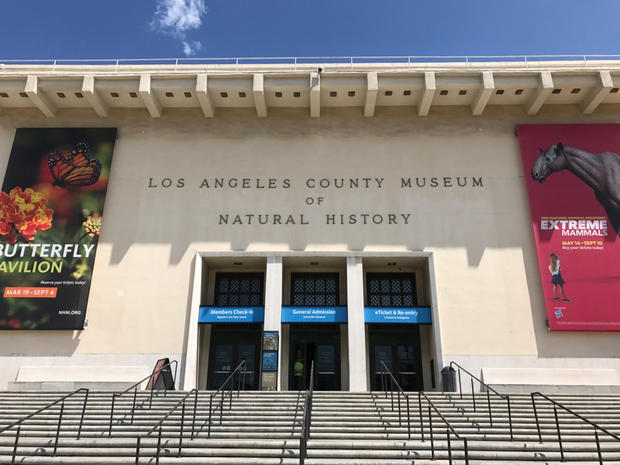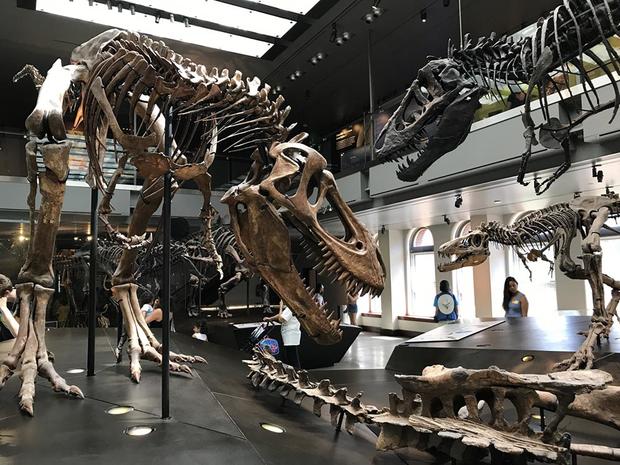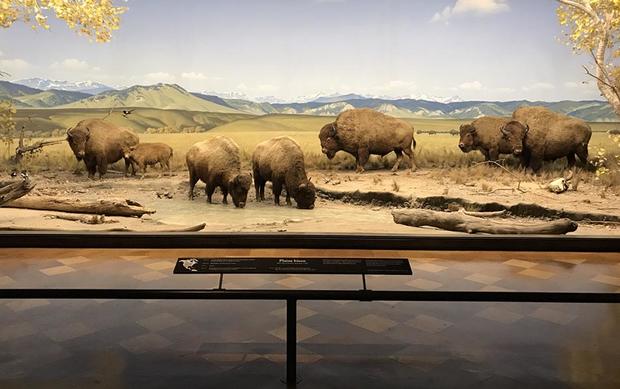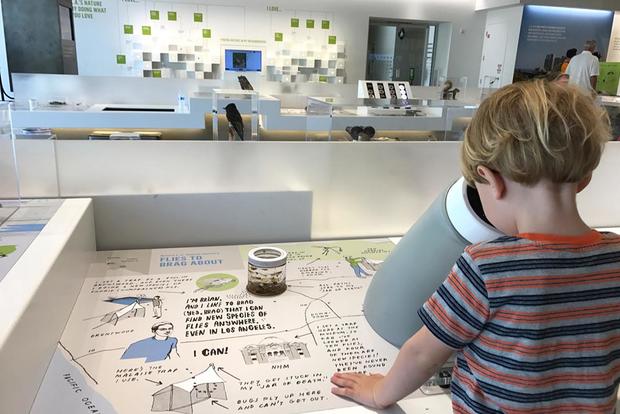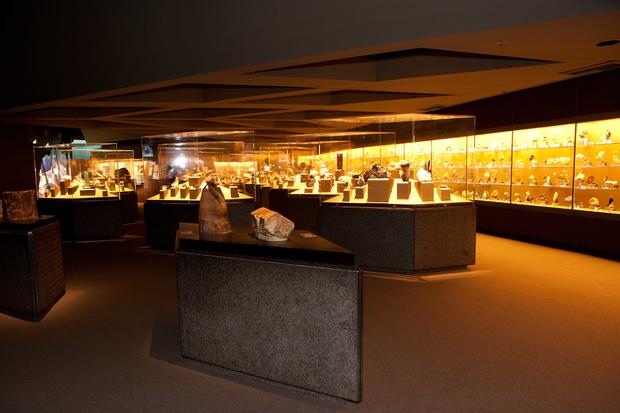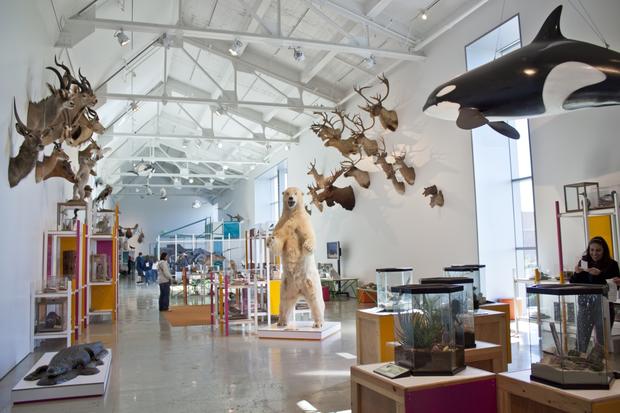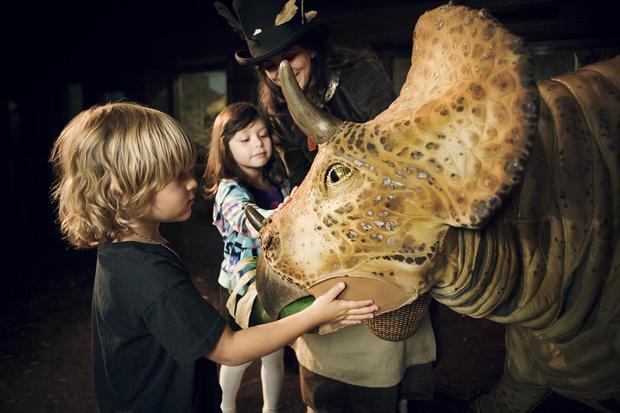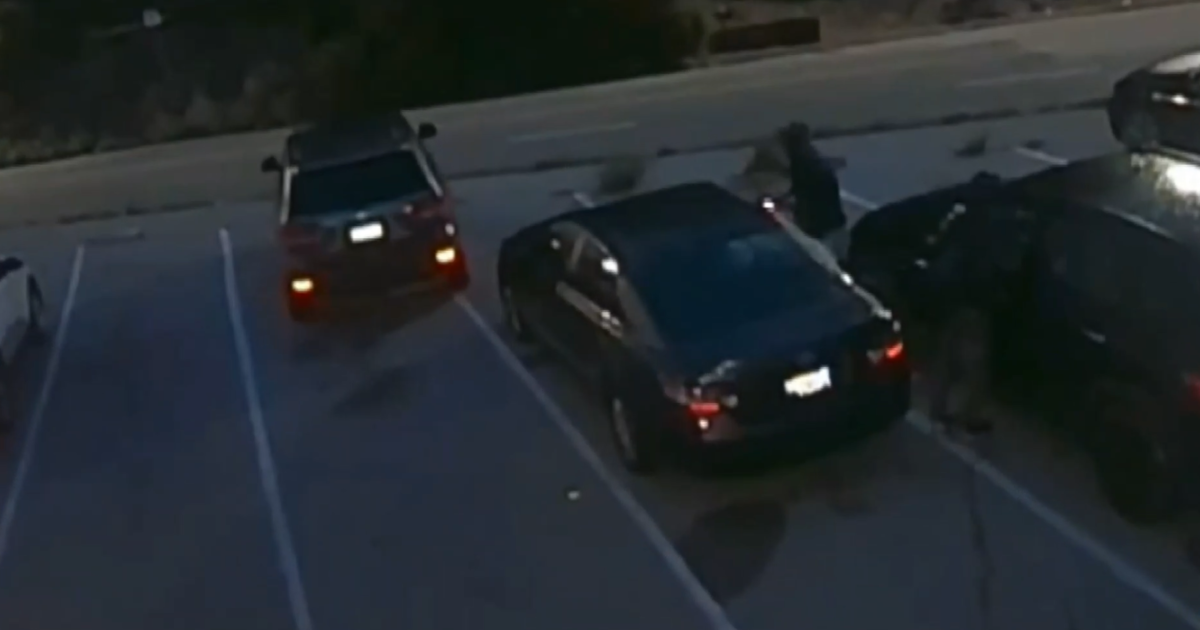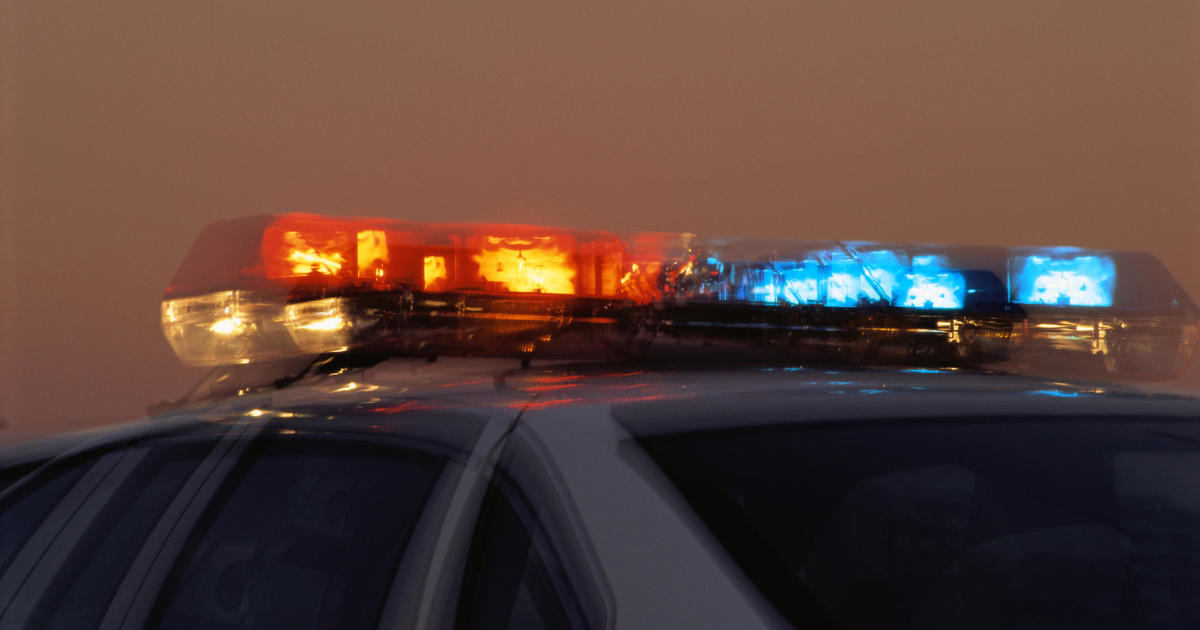Guide To The Natural History Museum
Natural History Museum of Los Angeles County
900 W Exposition Blvd.
Los Angeles, CA 90007
(213) 763-3466
www.nhm.org
Hours: 9:30 am - 5 pm daily (Closed: January 1, July 4, Thanksgiving Day, and Christmas Day)
- Adults: $12
- Seniors (62+): $9
- Students (13-17 or college with valid ID): $9
- Children (3-12): $5
- Under 3: Free
Admission is free the first Tuesday of every month (except July and August), and every Tuesday in September!
Combo tickets with the Tar Pits Museum are also available, as are Membership Plans, and ticket packages that include the Natural History Museum, LA Zoo, and Aquarium of the Pacific. Some non-permanent exhibits have an added cost as well.
Go Metro
It's now easier than ever to take public transportation to the museum, including the Expo Line, running daily from 5am - 12:30am. There are stops on both sides of the museum: Expo Park/USC and Expo/Vermont. There are also several Metro bus line stops within easy walking distance of the museum. As an added bonus, show your valid Metro tap card and get $1.25 off adult admission (which is almost the cost of a one-way ticket, so your ride there is practically free!). The museum's Directions page includes lots of helpful info on taking the train, so be sure to check it out before you go if you have any questions.
By Car
The Natural History Museum is located in Exposition Park between Vermont Ave. and Figueroa St. Take the 110 Freeway to the Exposition Blvd. exit and head west toward Vermont Ave. After a left turn onto Bill Robertson Lane, you'll see the museum's newly opened Car Park on your left. It's $12 (cash or credit) to park, and if that's full, parking is usually available in the State-run lots on the right ($12 cash only).
Dinosaur Hall
The spectacular 14,000 square-foot Jane G. Pisano Dinosaur Hall is a world leader in fossil display. Over 300 fossils, including 20 complete dinosaur and sea creature fossil mounts, fill the hall with prehistoric wonder. It's the only place you'll find a Tyrannosaurus rex growth series, featuring a baby, juvenile, and subadult T. rex. An imposing Triceratops greets visitors at the exhibit's entrance, and is followed by a recreated scene of a Stegosaurus fighting with predator Allosaurus. The hall also features multimedia stations with hands on activities, and tons of learning opportunities.
Dino Lab
The Dino Lab is your chance to get a behind-the-scenes look at staff working daily on real fossils. Paleontologists work behind the glass restoring cracks in fossilized bones and preparing new specimens collected over the last decade. The museum is also in the process of creating a comprehensive photographic archive of the fossils prepared in the Dino Lab. You can even touch a real million-years-old dino footprint and T. rex toe bone!
African and North American Mammal Halls
The dioramas that fill the African and North American Mammal Halls are among some of the finest in the world. Recreations of animal habitats and environments are on display to study up close, in detail. Found over 75 years ago, and meticulously reconstructed by the pros, these magnificent creatures are brought to life against exquisitely painted backdrops. Environments portrayed range from desert to rainforest, polar to plains, with recreations of the trees, plants, and birds that lived alongside the featured animals. For some animals, this is the only chance you may have to see them as their original environments no longer exist.
Age of Mammals
An evolutionary story 65 million years in the making unfolds in the museum's Age of Mammals. The exhibit has a timely, yet loaded theme: "Continents move. Climates change. Mammals evolve." It's the museum's first permanent exhibit tracking mammal evolution starting from the extinction of large dinosaurs to the rise of humans, within the context of changes in the Earth's geology and climate. A total of 240 specimens, including articulated mammal skeletons, display the evolution and diversity of mammal life. Compare a taxidermy sprinting cheetah alongside a similarly posed cheetah skeleton, an alpaca, zebra, and more.
Becoming Los Angeles
The Natural History Museum's "Becoming Los Angeles" exhibit explores how our city went from remote pueblo to bustling metropolis over a 500 year span. The exhibit is rich with history, covering the Spanish Mission Era, Mexican Rancho Era, early American period, late 19th and 20th centuries, the Great Depression, and WWII. Discover the stories of L.A.'s native lineage, from Native Americans, to oil barons, to filmmakers and inventors. It's a must-see for any locals who are interested in the history of our great city.
Nature Lab
Ever wonder what possums do at night? Or what a bug looks like under a microscope? The museum's Nature Lab is a hands-on room filled with a variety of learning devices and stations about our city's wild side. Memory Maps show illustrated nature experiences of scientists and educators, Wild Touchscreens give you the chance to play conductor to a symphony of backyard sounds, and a few Live Animals are on display so you can check out turtles, snakes, insects, and rats in a recreation of a natural habitat. Right outside the Nature Lab you'll also see the museum's new exhibit of L.A.'s most famous feline, P-22. Check out a large map of where the mountain lion makes his home, screen stealth footage gathered by the museum's scientists, and learn how this Santa Monica native made his way to a life in Griffith Park.
Hall of Gems and Minerals
You might think all those dinosaur bones are the oldest thing in the museum, but you'd be wrong. Inside the Hall of Gems and Minerals lies the museum's meteorite exhibit, featuring specimens 4.5 billion years old. A little less old, but still impressive, is one of the largest exhibits of all-natural gold in the world, boasting over 300 pounds of total gold, displayed in interesting and unique ways. Within the gold display is the "Mojave Nugget," the largest gold nugget ever found in California.
Visible Vault: Archeological Treasures from Ancient Latin America
Over 600 artifacts and treasures from Ancient America have been taken out of storage and placed on display at the Visible Vault exhibit. Mounted in non-traditional manners, the pieces gathered from the Americas prior to European exploration are presented in a way to give visitors a behind-the-scenes feel. The dim, dramatic lighting also showcases the artifacts in a way similar to how they'd be seen when used in ceremony.
Hall of Birds
Slightly creepy or super incredible, you make the call as you explore the museum's Hall of Birds. A dynamically diverse selection of birds from around the world, including over 400 Southern Californian species, are on display. Often too fast to catch more than a glimpse of, these taxidermy birds on display give you a chance to take a good long look. Learn about the mechanics of bird flight, examine specimens of eggs, nests, wings, feet, and more.
Discovery Center & Insect Zoo
The Discovery Center is another one of the museum's hands-on areas. Minerals, furs, and fossils are on display and ready for the touching. Dare to step into the Insect Zoo, where nine of the museum's favorite local insects and arthropods call home. The Center is also home to the museum's Instagram-worthy polar bear, a herd of African antelope, and the puppets from the Dinosaur Encounters show. Microscopes and magnifying glasses are on hand for any closer investigating you'd like to do there, as are a set of binoculars in case you want to check out what's going on outside.
Nature Garden
In addition to all the great exhibits indoors, the Natural History Museum has a large outdoor area perfect for exploring. With every flower, tree, and bush planted to attract L.A. wildlife, you're bound to catch some beautiful butterflies, hummingbirds, and critters out there. On a hot day, the Urban Waterfall is a great place to dip your toes and relax under the sycamore tree. Or visit the Pond to see what other animals are hanging out in the water. Additional outdoor highlights include the Get Dirty Zone where you can dig up some fun in the soil, a Pollinator Garden where pollinators visit native plants for fuel, Bird Watching Platform, and Living Wall.
Dinosaur Encounters
Dinosaur Encounters is your chance to see an eerily realistic T. rex and Triceratops come to life. Created and manned by the museum's expert paleontologists and puppeteers, the giant beasts take audience members back in time to see how they moved and possibly behaved. The dinos walk, stomp, and put on a show right before your eyes. The show is free, and takes place in the North American Mammal Hall Thursdays, Saturdays, and Sundays. Arrive early as it's a very popular show, and seating is first-come, first-served.
More Information
Before you go, be sure to check out the Natural History Museum's website. It's full of helpful info, including maps, how to plan your visit if you only have an hour, and information on the surrounding Exposition Park.
